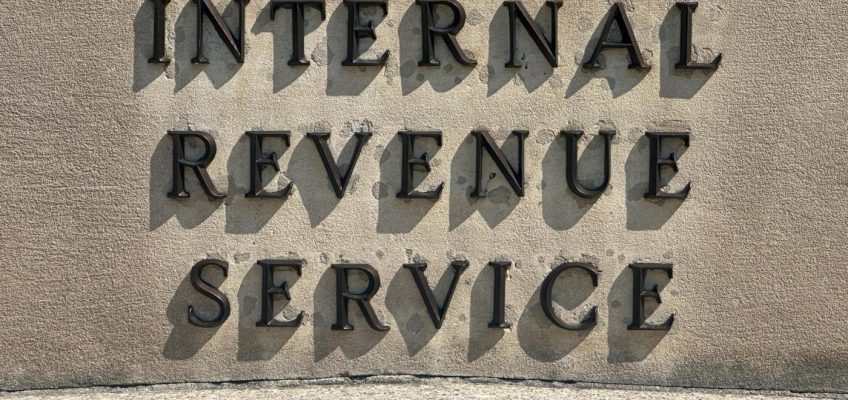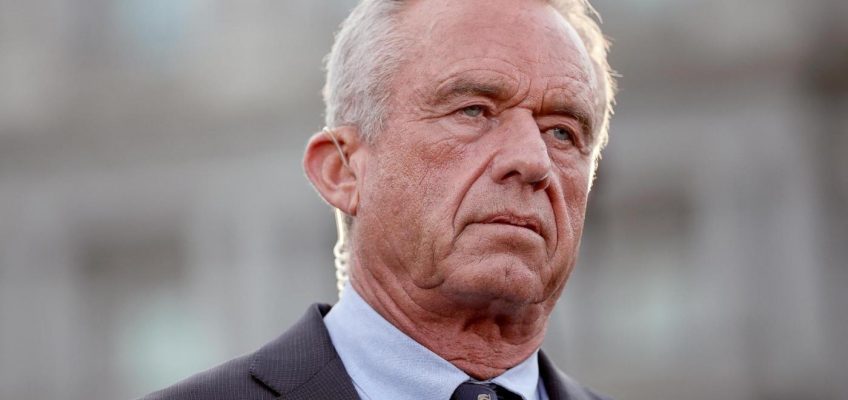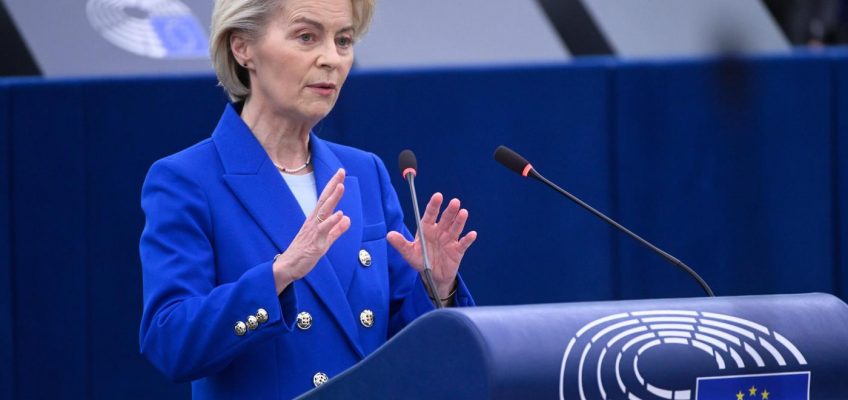By Céline Gounder, KFF Health News
Department of Health and Human Services Secretary Robert F. Kennedy Jr. has floated a seismic idea: adding autism to the list of conditions covered by the Vaccine Injury Compensation Program. The program, known as VICP, provides a system for families to file claims against vaccine providers in cases in which they experience severe side effects. Kennedy has also suggested broadening the definitions of two serious brain conditions — encephalopathy and encephalitis — so that autism cases could qualify.
Either move, experts warn, would unleash a flood of claims, threatening the program’s financial stability and handing vaccine opponents a powerful new talking point.
Legally, HHS “is required to undergo notice and comment rulemaking to revise the table,” said Richard Hughes, a law firm partner who teaches at George Washington University. The “table” is a list of specific injuries that the U.S. government accepts as presumed to be caused by a vaccine if those injuries occur within a certain time window. If someone can show they meet the criteria, they have a simpler path to securing compensation without having to prove fault. Autism is not in the table because a link between vaccines and autism has been thoroughly debunked.
If autism is added, Hughes explained, the VICP could face “an exorbitant number of claims that would threaten the viability of the program.”
Asked about its possible plans, an HHS spokesperson told CBS News the agency does not comment on future or potential policy decisions.
Carole Johnson, former administrator of the Health Resources and Services Administration, which oversees VICP, cautioned that the system is already overburdened: “The backlog is not just a function of management, it’s built into the statute itself. That’s important context for any conversation about adding new categories of claims.”
Dorit Reiss, a law professor at the University of California College of the Law-San Francisco, said that any such change would be exploited: “This can, and likely will, be used to cast doubt on vaccines.”
Compensation without causation
The Vaccine Injury Compensation Program was born of crisis. In 1982, “Vaccine Roulette,” a television documentary, aired nationwide, alleging routine childhood shots were causing seizures, brain damage, and even sudden infant death. The program alarmed parents and triggered a surge of lawsuits against vaccine makers.
“That led to a flood of litigation against vaccine makers,” recalled Paul Offit, a pediatric infectious disease specialist and vaccine inventor at the University of Pennsylvania. “I mean, to the point that it drove them out of the business. … By the mid-1980s, there were $3.2 billion worth of lawsuits against these companies.”
Were it not for the VICP, Offit said, “We wouldn’t have vaccines for American children. The companies — it wasn’t worth it for them.”
The National Childhood Vaccine Injury Act of 1986 created a no-fault system. Families who believed a vaccine caused harm could file a claim; if the injury appeared on the table within a set time frame, compensation was automatic. If not, claimants could present medical evidence. The system had two purposes: provide compensation and protect the vaccine supply.
From the beginning, the table was understood not as a scientific document but as a legal tool.
“It’s a legal document and things can be included for policy reasons even if the causation evidence is weak,” Reiss said. She explained, “The program is designed to be generous, to compensate in cases of doubt.”
But, she said, “autism is not in that category. The science is clear. Adding it would be pure politics.”
This tension — between law, science, and public perception — has defined the program for nearly four decades.
What expansion would mean in practice
Since 1988, federal data shows more than 25,000 petitions to the VICP have been adjudicated; of those, 12,019 were granted compensation and 13,007 were dismissed. About 60% of compensated cases involved negotiated settlements in which HHS drew no conclusion about the cause. Over the same period, billions of vaccine doses were safely administered to millions of Americans.
Adding autism to the VICP table would change that picture overnight.
Federal estimates suggest up to 48,000 children could qualify immediately under a “profound autism” standard, with potential payouts averaging $2 million per case, at an initial cost of nearly $100 billion, followed by annual totals of about $30 billion a year — dwarfing the current $4 billion trust, a new analysis finds.
“Any case where the symptoms appeared in the past eight years and the parents blame vaccines,” Reiss said. “I don’t know how many that would be. The fund has a surplus of over $4 billion. One seriously disabled child’s care can cost millions, so a significant number, say 100,000 compensations, might exhaust it.”
Furthermore, with only eight special masters handling cases, the system would also be paralyzed by backlogs.
The stakes are not just fiscal. If the fund collapses under the weight of autism claims, vaccine makers may question whether producing vaccines for the U.S. market is worth the risk. That would mirror the crisis of the 1980s, which led to the establishment of the VICP.
Where jobs are scarce, over 1 million people could dodge Trump’s Medicaid work rules
Staffing shortages cause more US flight delays as government shutdown reaches 8th day
Trump’s $100,000 H-1B visa fee threatens rural schools and hospitals reliant on immigrant workers
Trump says Illinois governor and Chicago mayor should be jailed as they oppose Guard deployment
National Guard troops are outside Chicago and could be in Memphis soon in Trump’s latest deployment
Autism and the courts
In the late 1990s and early 2000s, Andrew Wakefield’s now-retracted paper alleging a link between the MMR vaccine and autism fueled a surge of VICP claims. By 2002, the VICP was swamped with petitions alleging vaccines had caused autism. The court consolidated thousands of cases into the Omnibus Autism Proceedings, selecting a handful of test cases to decide them all.
After years of hearings and expert testimony, the conclusion was unequivocal: vaccines do not cause autism. In 2010, the court ruled against petitioners on every theory of causation. The U.S. Court of Federal Claims affirmed, and the Court of Appeals upheld, the decision.
“That precedent is binding,” said Richard Hughes, a vaccine law expert at George Washington University and former VICP legal counsel. “Autism was litigated thoroughly and rejected. That still carries weight in the court today.”
The ghost of Hannah Poling
Yet, the vaccine-autism debate has never quite faded. In 2008, the government conceded a case involving Hannah Poling, a girl with a rare mitochondrial disorder who developed autism-like symptoms after vaccination. Officials stressed the concession was specific to her condition, not evidence of a general link. But headlines told another story: “Family to Receive $1.5 Million in First-Ever Vaccine Autism Court Award.”
The Poling case fueled years of confusion.
Autism science today
The science is clearer than ever. Autism begins early in pregnancy, not in toddlerhood when most vaccines are given.
“Vaccinations … happened around the time families were recognizing symptoms of autism in their children,” said Catherine Lord, a UCLA clinical psychologist and specialist in autism diagnosis. “However, we now know that autism begins much earlier, likely as the fetus develops during pregnancy, so it cannot be an explanation.”
Peter Hotez, a pediatric infectious disease specialist and vaccine scientist at the Baylor College of Medicine who is also the father of a young adult with autism, underscores that point: “The drivers of autism are genetics and, in rare cases, environmental exposures during pregnancy, not vaccines. We’ve been over this ground for decades, and the evidence is overwhelming.”
Sarah Despres, former legal counsel to the secretary of Health and Human Services in the Biden administration and now a consultant to nonprofit organizations on immunization policy, adds that the compensation program itself is often misunderstood.
“The table was originally written as a political document,” she said. “The purpose of the program was to be swift, generous, and fair. … There would be cases that may not be caused by the vaccine but would be compensated if you went through this table injury scheme, where you don’t have to prove causation.”
What’s at risk: Harm from the diseases themselves
The stakes are not abstract. Measles, one of the most contagious pathogens on Earth, spreads so efficiently that one infected child can transmit it to 90% of susceptible contacts. Before vaccinations began in the 1960s, measles sickened hundreds of thousands annually in the U.S., killing hundreds and causing thousands of cases of encephalitis and lifelong disability. Complications included pneumonia, brain swelling, and, in rare cases, a fatal degenerative brain disorder called subacute sclerosing panencephalitis, or SSPE, that can strike years later. This year, a school-age child in Los Angeles County died of SSPE after contracting measles in infancy, before being eligible for vaccination.
Mumps was once a near-universal childhood illness. Though often dismissed as mild, it can cause sterility in men, meningitis, and permanent hearing loss. Outbreaks on college campuses, as recently as the 2000s, showed how quickly it can return when vaccination rates slip.
Rubella, also known as German measles, is mild in most children, but can be devastating during pregnancy. Congenital Rubella Syndrome, or CRS, caused waves of tragedy before the development of the vaccine: Thousands of babies each year were born blind, deaf, with heart defects, or with intellectual disabilities. In medical texts, autism itself is listed as one of CRS’ sequelae, or possible consequences — proof that rubella infection, not vaccination, can contribute to developmental disorders.
Measles, mumps, and rubella “are not trivial,” said Walt Orenstein, former head of the Centers for Disease Control and Prevention’s immunization program. “Fever, high fever, is common … and they have frequent complications.”
And yet, as these diseases fade from living memory, a counternarrative has gained traction. On Sept. 29, the nonprofit Physicians for Informed Consent, a group that disputes the scientific consensus on vaccines, announced it had mailed its “Silver Booklet” on vaccine safety to every member of Congress, as well as to President Donald Trump and Vice President JD Vance. The book claims that “vaccines are not proven to be safer than the diseases they intend to prevent,” and calls on federal leaders to punish states that restrict vaccine exemptions. (The booklet isn’t free. The group sells copies for $25 on Amazon.)
Scientists say this framing misrepresents the basic math of risk. “Measles is one of the most important infectious diseases in human history,” notes “Plotkin’s Vaccines,” the field’s authoritative textbook. “The widespread use of measles vaccines in the late 20th and early 21st centuries led to a further marked reduction in measles deaths. Measles vaccination averted an estimated 31.7 million deaths from 2000 to 2020.”
Kennedy’s possible move to expand the Vaccine Injury Compensation Program hinges on casting doubt — on suggesting that science is unsettled, that vaccines may be riskier than diseases.
“One tactic used to argue that vaccines cause autism is the use of compensation decisions from the National Vaccine Injury Compensation Program to claim such a link,” said Reiss of UC Law-San Francisco. “Even the cases that most closely address the question of vaccines and autism do not show the link that opponents claim exists, and many of the cases used are misrepresented and misused.”
Offit underscores the danger on the perception side. “When people see the Vaccine Injury Compensation program, they assume that any money that is given is because there was a vaccine injury,” he said.
Kathryn Edwards, an expert in pediatric infectious diseases and vaccine safety at Vanderbilt University, said, “Expanding compensation for issues that are not clearly related to vaccines … suggests that these conditions are related to vaccines when they are not.” She compared it to the removal of thimerosal, a preservative dropped from most childhood vaccines to ease public fears, despite no evidence of harm. “Now, we are still suffering from that action.”
Public health experts stress that such narratives invert reality. The very diseases being downplayed once killed or disabled tens of thousands of American children each year. As pediatrician, psychiatrist, and medical historian Howard Markel put it: “Back a hundred years ago, everybody lost a kid or knew a kid who died of one of these diseases. … We never conquer germs, we wrestle them to a draw. That’s the best we do. And so this is a real … handicap to the other side, the microbes who live to infect.”
Families and the future
The hardest voices to reckon with are those of families. Parents of autistic children often feel abandoned — unsupported by disability programs, exhausted by care needs, searching for answers. Kennedy’s appeal to them is emotional, not scientific.
Reiss noted that families deserve far more support but argues that it shouldn’t come through VICP.
“The program is to award compensation to those injured by vaccines,” she said. “We should have more direct support — disability funding, disability aid. Kennedy has been taking HHS in the opposite direction, cutting services where we need more.”
Despres made the same point: “The goal of the program really was if there’s a close call, we’re going to err on the side of compensation. … And it’s really important that everyone understands that compensation does not mean that the vaccine actually caused the injury. … And I think we have seen statistics around the compensation program misused by those who would want to sow distrust in vaccines, to say vaccines are unsafe, when in fact … that’s not what this is.”
UCLA’s Lord urged a shift in focus. “For the last 50 years, science has focused on the biological causes of autism, which has led to great progress, especially in genetics,” she said. Of Secretary Kennedy, she said, “He could help more by acknowledging the value of science, but also the need to better attend to the actual lives of autistic people and their families.”
What comes next?
If Kennedy decides to move forward with such a plan, HHS would need to draft a rule, open it to public comment, and then defend the change in court. The pushback will be fierce: from scientists, from public health leaders, and from families who fear being misled yet again.
The debate over adding autism to the Vaccine Injury Table is not just a policy debate. The program was built on the principle of compensation without causation, a fragile balance designed to sustain both trust and supply. Adding autism could collapse that distinction entirely.
©2025 KFF Health News. Distributed by Tribune Content Agency, LLC.




